In Tokyo, which has a strong image as a sprawling metropolis, there is actually a mountain that ranked first in the world for its number of climbers. The mountain is Takao, and it is located about an hour by train from central Tokyo. With its peak at an altitude of 599 meters, Mt. Takao is suitable even for beginners, and the cable car and lift also allow for sightseeing with ease. The nature-rich area around Mt. Takao offers a wide range of things to enjoy as well, including views from the top of the mountain, temples to visit, and hot springs to relax in.
01.
03.
04.
Get off at Keio Line Takaosanguchi Station ➡ 5-min. walk ➡ Mt. Takao (trail entrance) ➡ Take Trail No. 1, approx. 80-min. walk ➡ Takao-san Yakuo-in Yuki-ji Temple ➡ Approx. 20-min. walk ➡ Mt. Takao Summit ➡ Approx. 40-min. walk ➡ Take the Takaotozan Railway Cable Car from Takaosan Station, get off at Kiyotaki Station ➡ Approx. 3-min. walk ➡ TAKAO 599 MUSEUM ➡ Approx. 4-min. walk ➡ Keio Takaosan Onsen Gokurakuyu ➡ Short walk ➡ Take the Keio Line from Takaosanguchi Station, get off at Takahatafudo Station. Approx. 5-min. walk ➡ Takahata-Fudoson Kongoji Temple

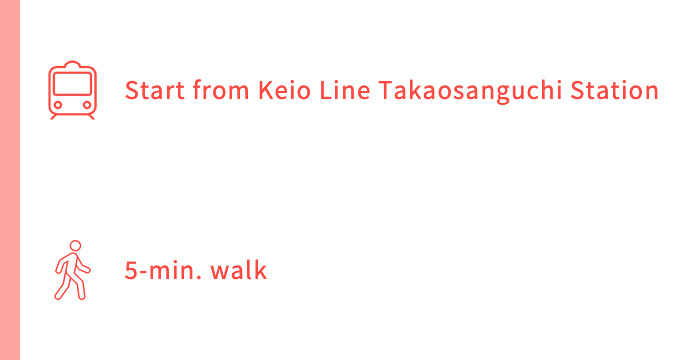
Mt. Takao
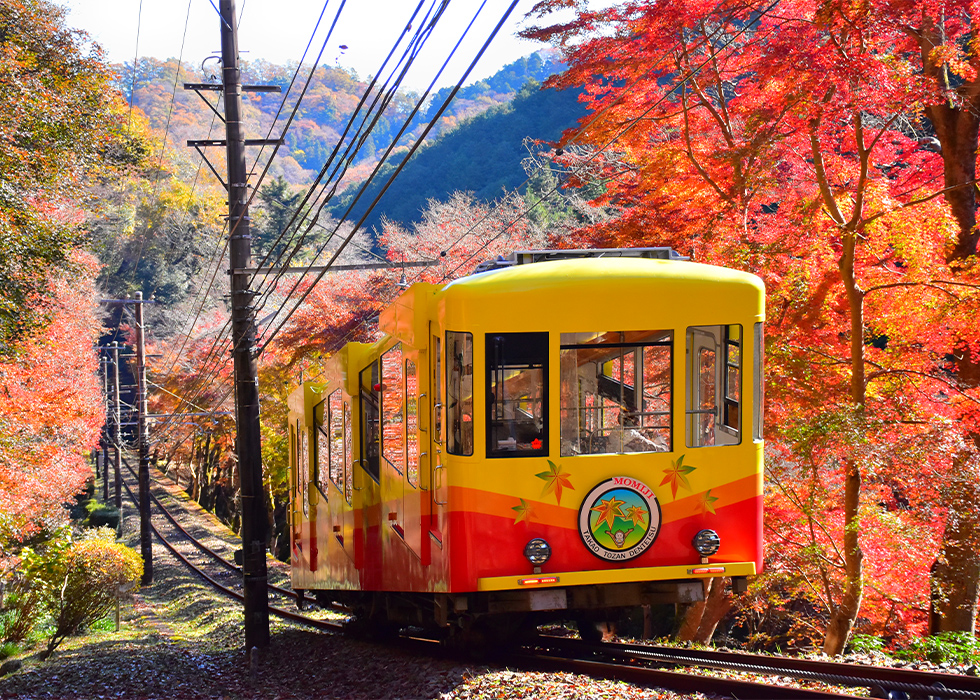
Approximately one hour by train from Shinjuku, Mt. Takao is renowned for being very easy to climb, thanks to the trains that run right by the trail entrance. Its peak stands at 599 meters. There are many trails to choose from, as well as a cable car and a lift that can take you halfway up the mountain. The view from the observatory and meals at the teahouse make it a popular destination for enjoying a wide range of both sightseeing and hiking activities. In 2007, the Michelin tourist guide awarded the mountain a three-star rating, which drew even more climbers, with the current number of climbers between 2.6 and 3 million per year, making it the mountain with the greatest number of climbers in the world.
Address: Takaomachi, Hachioji-shi, Tokyo
https://www.hkc.or.jp/en/


Takao-san Yakuo-in Yuki-ji Temple
Mt. Takao has been considered a holy mountain since the Edo Period(1603-1867). Takao-san Yakuo-in Yuki-ji Temple, situated halfway up the mountain, stands as a symbol of this devotion. This temple was founded in the year 744 by the high priest Gyoki as a prayer temple for the protection of eastern Japan. Enshrined in the main hall is the temple’s principal image, Izuna Daigongen, who is said to bring many blessings such as disaster safety, accident prevention, and good fortune, which attracts many visitors throughout the year. There are also many attractions in the temple grounds, including a statue of a Tengu, a mythical creature which is believed to be a follower that protects the principal image, as well as the temple’s majestic main hall.
Address: 2177 Takaomachi, Hachioji-shi, Tokyo
https://www.takaosan.or.jp/english/


Mt. Takao summit
Mt.Takao(599 meters) has been selected as one of the “Fujimi 100 Scenery in Kanto”, a selection of the 100 best sites for observing Mt. Fuji in Kanto, as a public space where visitors can enjoy a nice view of the mount.
You can enjoy Mt. Fuji and the mountains of Tanzawa from the observatory, which is visited by many climbers on weekends, during the Golden Week and the autumn leaf season. The area near the top is flat and spacious, making it a great place to relax. There are also several establishments where you can take a break and enjoy a meal inside.
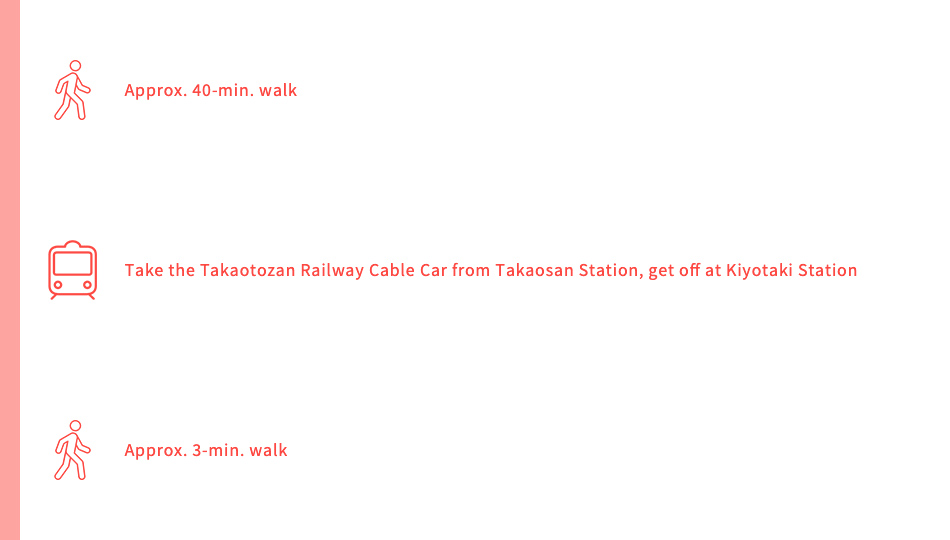
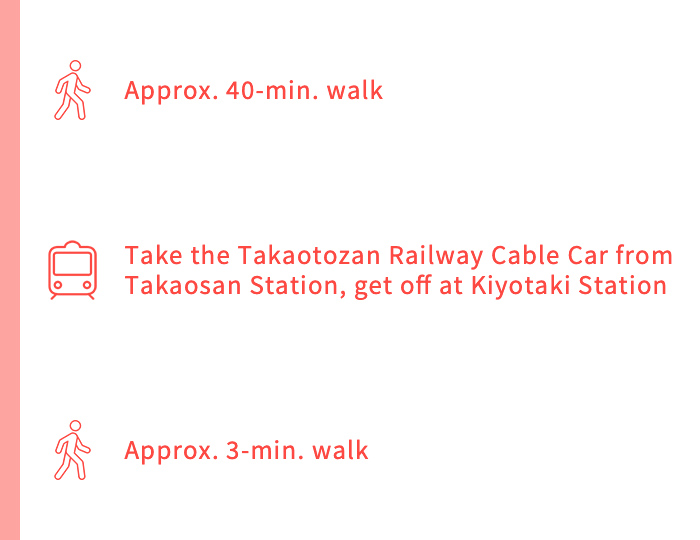
TAKAO 599 MUSEUM
At the TAKAO 599 MUSEUM, visitors can learn about the ecosystem, history, and culture of Mt. Takao through unique videos and exhibits. The exhibits feature a variety of ingenious display methods, such as plants native to Mt. Takao encased in acrylic resin and viewable as if they were works of art, and specimens of insects that look as if they are about to take flight. The highlight of the museum experience is its unique and dynamic projection mapping of images of the four seasons on a wall adorned with animals that represent the local wildlife. Admission to this facility, which shows you all about the charms of Mt. Takao, is free of charge.
Address: 2435-3 Takaomachi, Hachioji-shi, Tokyo
https://www.takao599museum.jp/?lang=en


Keio Takaosan Onsen Gokurakuyu
An absolute must-visit destination after you descend the mountain is Keio Takaosan Onsen Gokurakuyu, located right next to Takaosanguchi Station on the Keio Line. The outdoor rock baths offer a great sense of openness, allowing bathers to feel at one with the richness of nature as they relax in natural hot spring water that bubbles up from approximately 1,000 meters underground. Other baths include a Japanese cypress bath that is said to have a forest bathing effect, an open-air carbonated stone bath that artificially reproduces carbonated hot springs, which are rare in Japan, and a sauna that uses far-infrared rays to heat your body to the core. It also boasts a great meal menu, making it the perfect place to take a rest after a long day of mountain-climbing.
Address: 2229-7 Takaomachi, Hachioji-shi, Tokyo
https://www.takaosan-onsen.jp/english/index.html
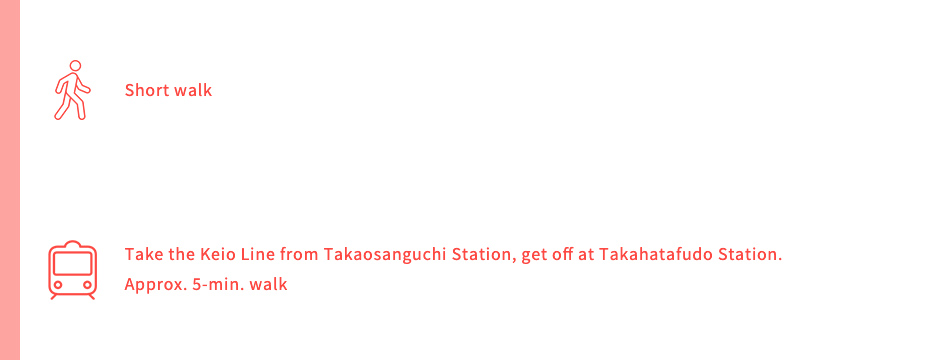
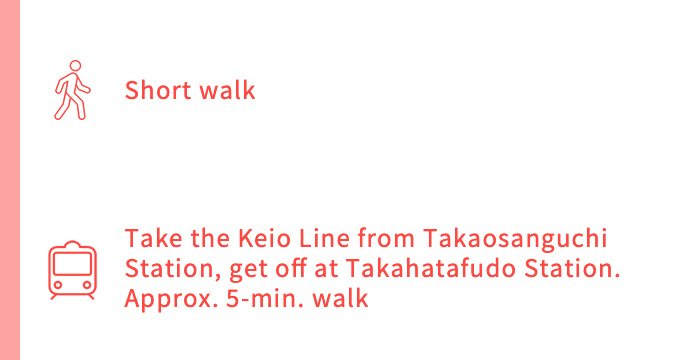
Takahata-Fudoson Kongoji Temple
About 20 minutes by train from Mt. Takao is Takahata-Fudoson Kongoji Temple, known for being one of the three major Fudoson temples in the Kanto region. Kongoji’s history goes back roughly 1,100 years to the early Heian Period (794-1185), when the deity Fudo-Myo-o was enshrined in the mountains to create a sacred place to protect the Kanto region. In addition to Joroku Fudosanson, a massive statue weighing more than 1,100 kg that is enshrined in the inner sanctuary, the spacious temple grounds are home to a variety of important cultural properties such as a statue of Fudo-Myo-o from the Heian Period and Niomon Gate, which was built in the Muromachi Period (14th century). It is also famous for being the family temple of Hijikata Toshizo, vice commander of the Shinsengumi, a corps of elite swordsmen in the employ of the military government in the final days of the Tokugawa shogunate, and is a popular destination for his fans.
Address: 733 Takahata, Hino-shi, Tokyo-to
https://www.takahatafudoson.or.jp/en